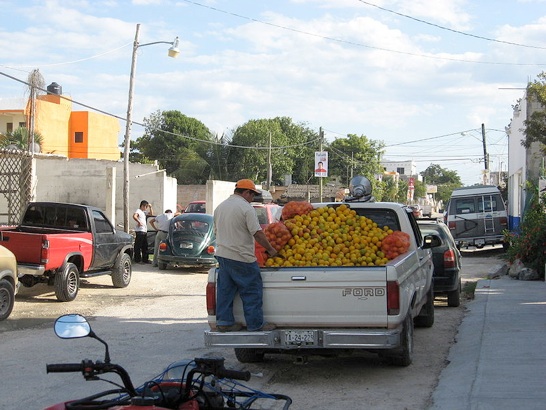Interactions

Citrus sinensis participates in many different symbioses, some of which are helpful to the plant while others are harmful. Two the most important relationships that are needed in order for the survival of C. sinensis are that with nitrogen-fixing bacteria and endomycorrihzal fungi.
Certain types of bacteria are some of the only organisms across the planet that are able to create a usable form of nitrogen for other organisms. In the case of C. sinensis, bacteria produce nitrogen, usually in the form of ammonia for the use of the plant and C. sinensis gives off carbohydrates that the bacteria can use. Although not directly related to the sweet orange, a type of cyanobacteria that is capable of nitrogen fixation is the Nostoc.
An important relationship exists between the sweet orange and a fungi from the phylum Glomeromycota. Nearly 90% of all plant species have relationships with a mycorrizal fungi and C. sinensis is no exception. These particular types of fungi reside in or outside of the plants’ roots and aid the roots in nutrient uptake, which include water and some of the essential elements such as Phosphorous (see Nutrition). In return, the fungi is provided with carbohydrates/sugars. Stunted growth has been seen in orange trees due to a lack of mycorrhizal fungi, which are believed to be killed off by certain types of pesticides and herbicides. Lowbush blueberry (Vaccinium angustifolium) is another angiosperm that relies on this type of mutualism with fungi.
Although it is highly commercialized, the sweet orange shares an intimate relationship with humans. C. sinensis is the most widely produced citrus fruit across the world and is one of the major exports in countries like Brazil. This organism provides many people with jobs and a means of living in addition to providing a nutritious and generally inexpensive food source to many others. Citrus sinensis is as important in some countries as potatoes (Solanum tuberosum) have been to Ireland.
Citrus sinensis plays an important role in mutualistic symbioses like the mycorrhizal fungi and nitrogen-fixing bacteria but it also is a host to many different types of parasites. There are parasites that can affect just about every part of the sweet orange from the roots to the leaves. The pests and diseases that affect C. sinensis have representatives from just about every kingdom including bacteria, fungi, and animals. Some of these parasites may cause very little damage to the plant as whole but others can be extremely detrimental. It is for this reason that large quantities of time and money are put into techniques in order to stop certain parasites.




